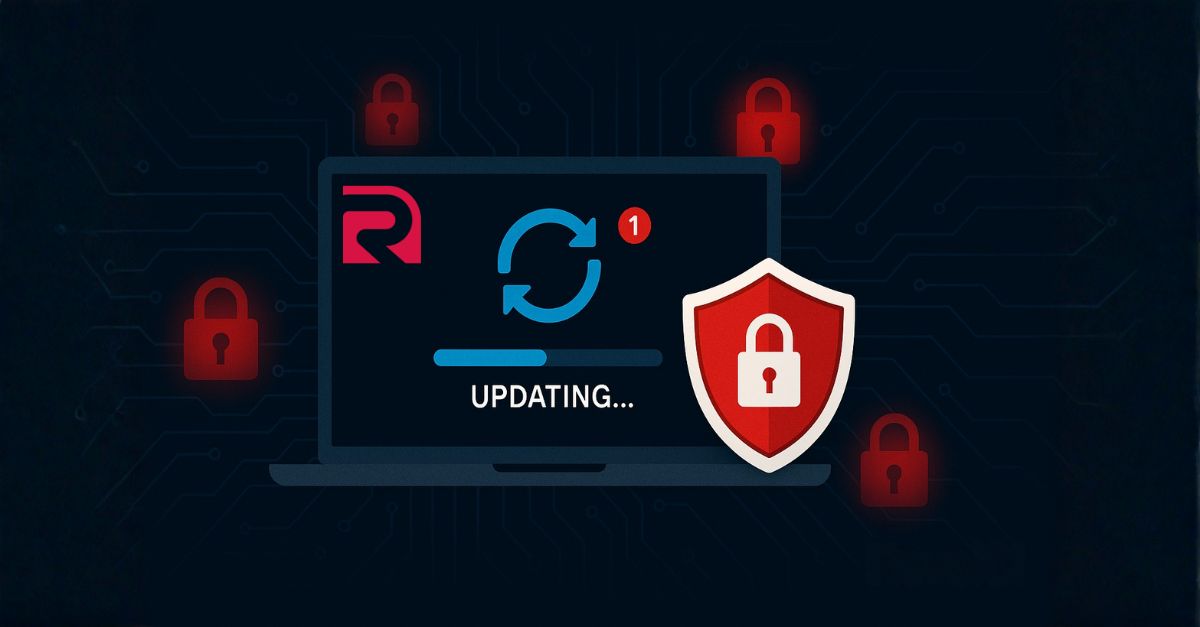Software Updates: Your First Line of Defense

Software Updates: Your First Line of Defense Against Cyber Threats
Ignoring software updates might seem harmless - but it leaves the door wide open to cyberattacks.
Overview
It’s easy to hit “Remind me later” when your computer or phone asks for an update. Maybe you’re busy, maybe it feels unimportant - after all, everything seems to be working fine. But behind that simple notification often hides a critical shield between your system and cybercriminals.
Software updates aren’t just about adding new features or improving design. They fix vulnerabilities - tiny holes in code that hackers can exploit to gain access to your personal data, financial information, or even your entire device. Keeping your system up to date is one of the simplest yet most powerful steps you can take to stay secure online.
What Is a Patch? Or a Vulnerability? How Do They Work Together?
Every piece of software - from your operating system to the apps you use for work or entertainment - is built from millions of lines of code. Within that code, even small mistakes can create weaknesses known as vulnerabilities. These are unintended flaws that make it possible for attackers to sneak in, manipulate data, or take control of your system.
When developers or security researchers discover such vulnerabilities, they create a patch - a targeted piece of code designed to fix the specific problem. Once the patch is ready, it’s distributed to users through a software update.
Think of it like this: The vulnerability is a hole in your digital wall. The patch is the repair that seals it. The update is the delivery mechanism that gets the fix to your system.
But timing is critical. Once a patch is released, the details of the vulnerability often become public. Cybercriminals can study the fix, understand what was wrong, and then craft attacks aimed precisely at unpatched systems. The longer a device goes without an update, the greater the chance it will be targeted.
One of the best-known examples is the WannaCry ransomware outbreak of 2017. It spread across the world by exploiting a Windows vulnerability that had already been patched months earlier. Organizations that delayed installing the update became easy prey, while those that had patched on time were protected.
In short: vulnerabilities are inevitable, but staying updated ensures attackers can’t exploit them.
Risks of Ignoring Updates
When you skip or postpone updates, you’re essentially leaving your digital door unlocked. The risks go far beyond inconvenience - they can directly affect your privacy, finances, and safety.
Unpatched systems are a favorite target for hackers because they’re predictable. Attackers know exactly where the weaknesses are and how to exploit them. From ransomware and identity theft to stolen passwords and compromised networks, outdated software often serves as the first step in a larger attack chain.
Even personal devices like phones and smart home gadgets can become gateways for cyber intrusions. A compromised smart camera, for instance, can give attackers access to your home network.
Businesses face even greater risks. One unpatched workstation can compromise an entire company’s systems, exposing sensitive data and causing massive downtime.
In short, ignoring updates doesn’t just slow down your device - it exposes you to real, tangible threats.
Recommendations
Staying protected doesn’t require deep technical knowledge. It’s mostly about consistency and awareness. Here’s how to make updates part of your everyday routine:
1. Turn on automatic updates.
Most operating systems and applications allow automatic updates. Enabling this feature ensures you receive patches as soon as they’re released, reducing the window of vulnerability.
2. Restart your devices regularly.
Some updates only take effect after a reboot. Make it a habit to restart your devices once or twice a week to ensure all patches are applied correctly.
3. Update everything, not just your computer.
Phones, tablets, routers, smart TVs, and even printers often need updates. Many cyberattacks begin with outdated IoT (Internet of Things) devices that have weak or forgotten security.
4. Download from trusted sources only.
Always install updates directly from official websites or app stores. Avoid third-party links or pop-ups offering “security updates” - these are often traps designed to infect your system.
5. Stay informed.
Follow your device manufacturer’s or software vendor’s security news page. Knowing when a major update or critical patch is released can help you act quickly.
Staying Ahead with RevelSI
In today’s fast-moving digital world, keeping every system updated can be challenging - especially for businesses managing hundreds of devices. That’s where RevelSI comes in.
Our cybersecurity-as-a-service model ensures your systems are always up to date, monitored, and protected. We handle patch management, vulnerability tracking, and compliance so you can focus on running your business without worrying about missing a critical update.
Because in cybersecurity, prevention is always cheaper - and safer - than recovery.
Stay current. Stay protected. Stay one step ahead.
